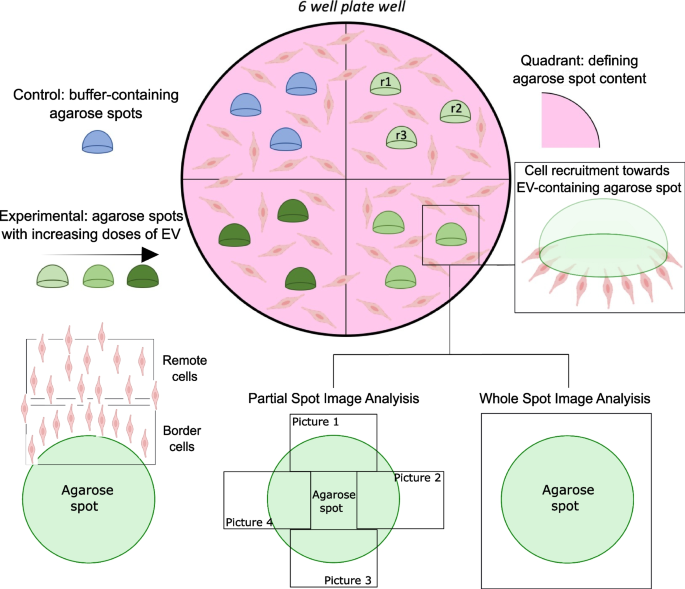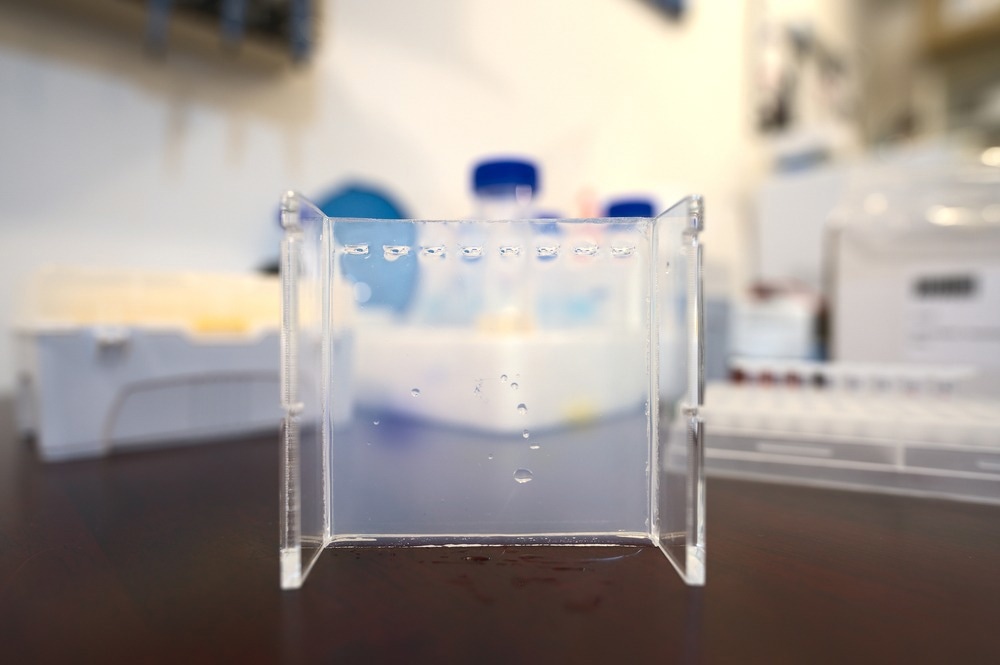Reviewed by Danielle Ellis, B.Sc.Nov 1 2023
A research project, jointly conducted by scientists affiliated with the Germans Trias i Pujol Research Institute, has uncovered the potential advantages of employing an agarose spot migration assay for assessing the capacity of extracellular vesicles to attract neighboring cells within a controlled setting.
 Schematic representation of the agarose spot migration. Image Credit: Germans Trias i Pujol Research Institute.
Schematic representation of the agarose spot migration. Image Credit: Germans Trias i Pujol Research Institute.
The study has been recently reported in the BMC Biology journal.
Extracellular vesicles (EVs) are nanoparticles released by cells that are present in various biological processes, including cellular communication.
Recent research highlights the pivotal role of cancer-related extracellular vesicles (EVs) in the formation of a pre-metastatic niche (PMN)-a preparatory microenvironment that facilitates the establishment and proliferation of disseminated tumor cells by recruiting cells from the primary tumor.

Image Credit: Eric H Cheung/Shutterstock.com
Understanding and quantifying the ability of these cancer-derived EVs to stimulate cell migration and recruitment is of utmost importance.
This knowledge is essential not only for the development of cell-free therapeutic strategies but also for advancing our comprehension of cancer metastasis.
In this context, conventional in vitro (laboratory-based) migration assays fall short in fully capturing the genuine capacity of EVs to chemically guide cells to new locations.
The study, led by researchers from the Innovation in Vesicles and Cells for Application in Therapy (IVECAT), Badalona Applied Research Group in Oncology (B·ARGO), and Resistance, Chemotherapy, and Predictive Biomarkers (RCPB) research groups at IGTP, underscores the significant influence of EVs on the process of cancer metastasis.
The research team customized the agarose spot migration assay, a laboratory technique, to suit the specific demands of extracellular vesicles (EVs). This modified assay assessed the extent to which these minute particles could effectively attract other cells within a controlled setting.
Their comprehensive analysis, incorporating various data types such as static images and time-lapse videos, unveiled variations in the recruitment capacity of EVs.
Significantly, they pinpointed a heightened recruitment potential in EVs originating from highly metastatic PC3 cancer cells, in contrast to those derived from less metastatic LNCaP cells.
The agarose spot migration assay may offer a diversity of measurements and migration settings not provided by classical migration assays, like scratch assays, and reveal its potential use in the EV and cancer metastasis fields. EV-adapted agarose spot migration assay is a simple, low-cost, and versatile technique that can be easily adapted to most laboratories.”
Marta Clos-Sansalvador, Study First Author and Predoctoral Student, Germans Trias i Pujol Research Institute
Source:
Journal reference:
Clos-Sansalvador, M., et al. (2023) Agarose spot migration assay to measure the chemoattractant potential of extracellular vesicles: applications in regenerative medicine and cancer metastasis. BMC Biology. doi.org/10.1186/s12915-023-01729-5.